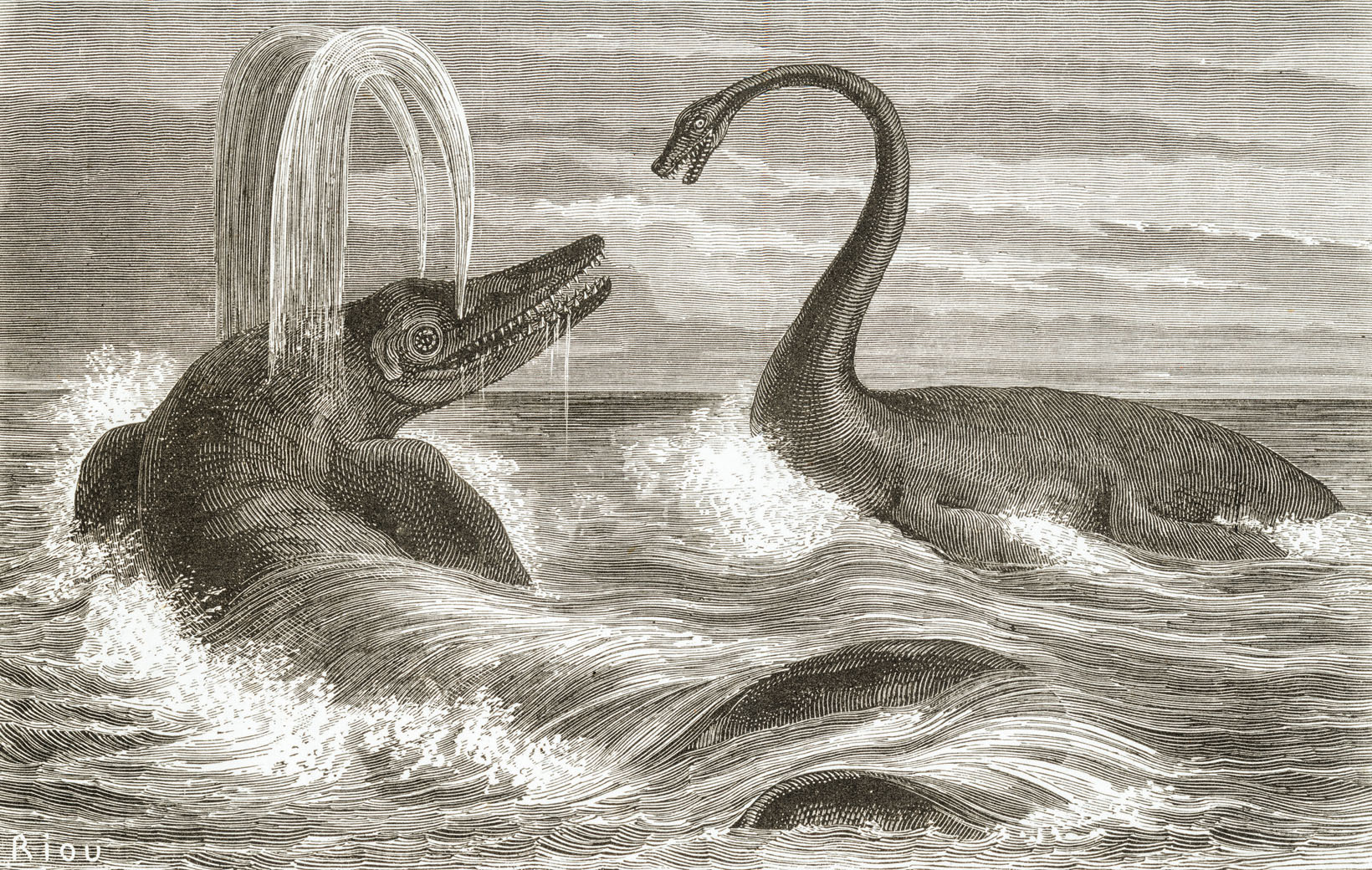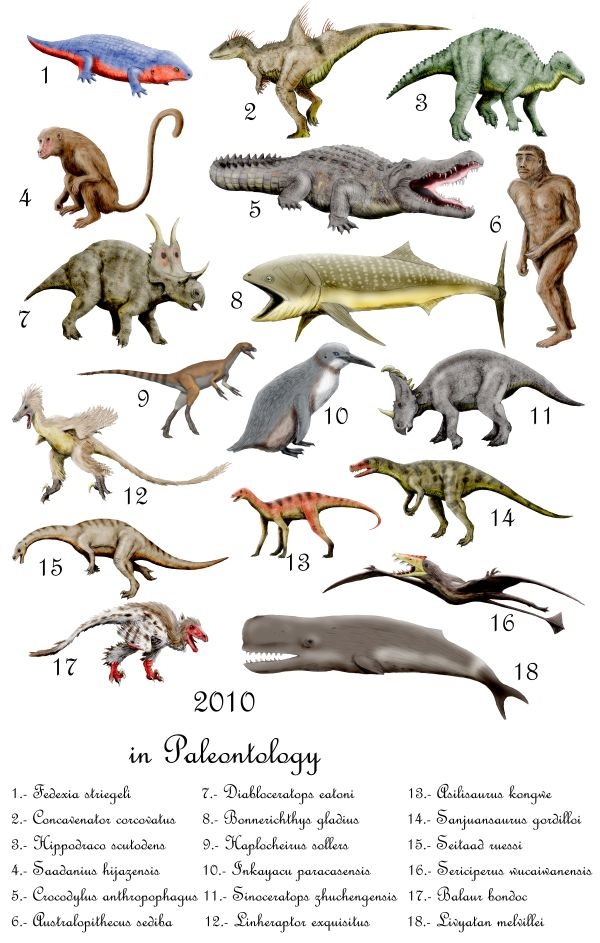|
Athabascasaurus
''Athabascasaurus'' is an extinct genus of platypterygiine ophthalmosaurid ichthyosaur known from Alberta, Canada. Discovery and etymology ''Athabascasaurus'' is known from the holotype TMP 2000.29.01, articulated nearly complete postcranial skeleton and nearly complete skull preserved in dorsal view, missing the premaxilla. It was collected in 2000 on the western side of the Syncrude Canada Ltd.'s Base Mine, an open-pit mine near Fort McMurray. The specimen was found in the Wabiskaw Member of the Clearwater Formation, which dates to the earliest Albian stage of the Early Cretaceous epoch, about 112 million years ago. The specimen resides at the Royal Tyrrell Museum of Palaeontology. ''Athabascasaurus'' was first named by Patrick S. Druckenmiller and Erin E. Maxwell in 2010 and the type species is ''Athabascasaurus bitumineus''. The generic name is derived from the name of the Athabasca River, which runs through Athabasca oil sands area where the holotype was collected, ... [...More Info...] [...Related Items...] OR: [Wikipedia] [Google] [Baidu] |
Ophthalmosaurid
Ophthalmosauridae is an extinct family of thunnosaur ichthyosaurs from the Middle Jurassic to the early Late Cretaceous (Bajocian - Cenomanian) worldwide. Almost all ichthyosaurs from the Middle Jurassic onwards belong to the family, until the extinction of ichthyosaurs in the early Late Cretaceous. Opthalmosaurids appeared worldwide during early Bajocian, subsequent to the disappearance of most other ichthyosaur lineages after the end of the Toarcian. Currently, the oldest known ophthalmosaurids is '' Mollesaurus'' from the early Bajocian of Argentina, as well as indeterminate remains of the same age from Luxembourg and Canada. Named by George H. Baur, in 1887, the family contains the basal taxa like ''Ophthalmosaurus''. Appleby (1956) named the taxon Ophthalmosauria which was followed by some authors, but these two names are often treated as synonyms; Ophthalmosauridae has the priority over Ophthalmosauria. However, some researchers argue that Ophthalmosauridae should be restric ... [...More Info...] [...Related Items...] OR: [Wikipedia] [Google] [Baidu] |
Platypterygiine
Platypterygiinae is an extinct subfamily of ophthalmosaurid thunnosaur ichthyosaurs from the early Late Jurassic to the early Late Cretaceous (Kimmeridgian - Cenomanian) of Asia, Australia, Europe, North America and South America. Currently, the oldest known platypterygiine is '' Brachypterygius''. Platypterygiines were characterized by square tooth roots in cross-section, an extremely reduced extracondylar area of the basioccipital, prominent dorsal and ventral trochanters on humerus and ischiopubis lacking an obturator foramen. Phylogeny Platypterygiinae was named in 2001 by Maxim S. Arkhangelsky and dually noted by colleague Aleski Masluk. It is a stem-based taxon defined phylogenetically for the first time by Fischer ''et al.'' (2012) as "all taxa closer to ''Platypterygius hercynicus'' than to ''Ophthalmosaurus icenicus''". The cladogram A cladogram (from Greek ''clados'' "branch" and ''gramma'' "character") is a diagram used in cladistics to show relations amo ... [...More Info...] [...Related Items...] OR: [Wikipedia] [Google] [Baidu] |
Wabiskaw Member
The Clearwater Formation is a stratigraphic unit of Early Cretaceous (Albian) age in the Western Canada Sedimentary Basin in northeastern Alberta, Canada. It was first defined by R.G. McConnell in 1893 and takes its name from the Clearwater River near Fort McMurray. Impermeable marine shales in the Clearwater Formation provided part of the trapping mechanism for the underlying Athabasca oil sands in the McMurray Formation. Sandstone units in the Clearwater Formation, including the Wabiskaw Member, can contain oilsand and heavy oil resources.Glass, D.J. (editor) 1997. Lexicon of Canadian Stratigraphy, vol. 4, Western Canada including eastern British Columbia, Alberta, Saskatchewan and southern Manitoba. Canadian Society of Petroleum Geologists, Calgary, 1423 p. on CD-ROM. . Nearly complete specimens of plesiosaurs and ichthyosaurs, as well as one ankylosaur, have been recovered from the formation during oilsand mining. Lithology The Clearwater Formation consists of primarily ... [...More Info...] [...Related Items...] OR: [Wikipedia] [Google] [Baidu] |
Ichthyosaur
Ichthyosaurs (Ancient Greek for "fish lizard" – and ) are large extinct marine reptiles. Ichthyosaurs belong to the order known as Ichthyosauria or Ichthyopterygia ('fish flippers' – a designation introduced by Sir Richard Owen in 1842, although the term is now used more for the parent clade of the Ichthyosauria). Ichthyosaurs thrived during much of the Mesozoic era; based on fossil evidence, they first appeared around 250 million years ago ( Ma) and at least one species survived until about 90 million years ago, into the Late Cretaceous. During the Early Triassic epoch, ichthyosaurs and other ichthyosauromorphs evolved from a group of unidentified land reptiles that returned to the sea, in a development similar to how the mammalian land-dwelling ancestors of modern-day dolphins and whales returned to the sea millions of years later, which they gradually came to resemble in a case of convergent evolution. Ichthyosaurs were particularly abundant in the Late Triassic ... [...More Info...] [...Related Items...] OR: [Wikipedia] [Google] [Baidu] |
2010 In Paleontology
Plants Angiosperms Molluscs Newly named bivalves Arthropods Fishes Amphibians Newly named amphibians Basal reptiles Newly named basal reptiles Ichthyopterygians Newly named ichthyopterygians Lepidosauromorphs Newly named plesiosaurs Newly named basal lepidosaurs Newly named lizards Newly named snakes Turtles Newly named turtles Archosauromorphs Newly named basal archosauromorphs Archosaurs Synapsids Newly named non-mammalian synapsids Mammals Other animals Footnotes Complete author list As science becomes more collaborative, papers with large numbers of authors are becoming more common. To prevent the deformation of the tables, these footnotes list the contributors to papers that erect new genera and have many authors. References {{Reflist, 2 2010 in paleontology, ... [...More Info...] [...Related Items...] OR: [Wikipedia] [Google] [Baidu] |
Greek Language
Greek ( el, label= Modern Greek, Ελληνικά, Elliniká, ; grc, Ἑλληνική, Hellēnikḗ) is an independent branch of the Indo-European family of languages, native to Greece, Cyprus, southern Italy (Calabria and Salento), southern Albania, and other regions of the Balkans, the Black Sea coast, Asia Minor, and the Eastern Mediterranean. It has the longest documented history of any Indo-European language, spanning at least 3,400 years of written records. Its writing system is the Greek alphabet, which has been used for approximately 2,800 years; previously, Greek was recorded in writing systems such as Linear B and the Cypriot syllabary. The alphabet arose from the Phoenician script and was in turn the basis of the Latin, Cyrillic, Armenian, Coptic, Gothic, and many other writing systems. The Greek language holds a very important place in the history of the Western world. Beginning with the epics of Homer, ancient Greek literature includes many works of l ... [...More Info...] [...Related Items...] OR: [Wikipedia] [Google] [Baidu] |
Fort McMurray
Fort McMurray ( ) is an urban service area in the Regional Municipality of Wood Buffalo in Alberta, Canada. It is located in northeast Alberta, in the middle of the Athabasca oil sands, surrounded by boreal forest. It has played a significant role in the development of the national petroleum industry. The 2016 Fort McMurray wildfire led to the evacuation of its residents and caused widespread damage. Formerly a city, Fort McMurray became an urban service area when it amalgamated with Improvement District No. 143 on April 1, 1995, to create the Municipality of Wood Buffalo (renamed the RM of Wood Buffalo on August 14, 1996). Despite its current official designation of urban service area, many locals, politicians and the media still refer to Fort McMurray as a city. Fort McMurray was known simply as McMurray between 1947 and 1962. History Before the arrival of Europeans in the late 18th century, the Cree were the dominant First Nations people in the Fort McMurray area ... [...More Info...] [...Related Items...] OR: [Wikipedia] [Google] [Baidu] |
Athabasca River
The Athabasca River (French: ''Rivière Athabasca'') is a river in Alberta, Canada, which originates at the Columbia Icefield in Jasper National Park and flows more than before emptying into Lake Athabasca. Much of the land along its banks is protected in national and provincial parks, and the river is designated a Canadian Heritage River for its historical and cultural importance. The scenic Athabasca Falls is located about upstream from Jasper. Etymology The name ''Athabasca'' comes from the Woods Cree word , which means " herethere are plants one after another", likely a reference to the spotty vegetation along the river. Course The Athabasca River originates in Jasper National Park, in an unnamed lake at the toe of the Columbia Glacier within the Columbia Icefield, between Mount Columbia, Snow Dome, and the Winston Churchill Range, at an elevation of approximately . It travels before draining into the Peace-Athabasca Delta near Lake Athabasca south of Fort Chip ... [...More Info...] [...Related Items...] OR: [Wikipedia] [Google] [Baidu] |
Name Of A Biological Genus
Genus ( plural genera ) is a taxonomic rank used in the biological classification of living and fossil organisms as well as viruses. In the hierarchy of biological classification, genus comes above species and below family. In binomial nomenclature, the genus name forms the first part of the binomial species name for each species within the genus. :E.g. '' Panthera leo'' (lion) and '' Panthera onca'' (jaguar) are two species within the genus ''Panthera''. ''Panthera'' is a genus within the family Felidae. The composition of a genus is determined by taxonomists. The standards for genus classification are not strictly codified, so different authorities often produce different classifications for genera. There are some general practices used, however, including the idea that a newly defined genus should fulfill these three criteria to be descriptively useful: # monophyly – all descendants of an ancestral taxon are grouped together (i.e. phylogenetic analysis should clearly demo ... [...More Info...] [...Related Items...] OR: [Wikipedia] [Google] [Baidu] |
Type Species
In zoological nomenclature, a type species (''species typica'') is the species name with which the name of a genus or subgenus is considered to be permanently taxonomically associated, i.e., the species that contains the biological type specimen(s). Article 67.1 A similar concept is used for suprageneric groups and called a type genus. In botanical nomenclature, these terms have no formal standing under the code of nomenclature, but are sometimes borrowed from zoological nomenclature. In botany, the type of a genus name is a specimen (or, rarely, an illustration) which is also the type of a species name. The species name that has that type can also be referred to as the type of the genus name. Names of genus and family ranks, the various subdivisions of those ranks, and some higher-rank names based on genus names, have such types. [...More Info...] [...Related Items...] OR: [Wikipedia] [Google] [Baidu] |




_(2).jpg)